![<i>Zuster Theresia</i> 1932 [[Dutch East Indies]] film](https://upload.wikimedia.org/wikipedia/en/f/fe/Zuster_Theresia.jpg)
Zuster Theresia is a 1932 film from the Dutch East Indies directed by M. H. Schilling with the help of the Wong brothers. The film, starring Henk Maschhaup, Daisy Diephuis, and Alle Heymann, follows a young man and his relationship with two women. A commercial failure, the film was the last made by Schilling and led the Wongs to take a two-year hiatus.
![<i>Alang-Alang</i> (film) 1939 [[Dutch East Indies]] (now [[Indonesia]]) film](https://upload.wikimedia.org/wikipedia/en/7/70/Alang-Alang_poster.JPG)
Alang-Alang is a 1939 film from the Dutch East Indies. Starring Mohamad Mochtar and Hadidjah, it follows a young man in his quest to rescue his love from a bandit. Inspired by the Tarzan film series and shot in a period of one month with borrowed animals, the film was a commercial success and credited as a factor in the solidification of the Indies' film industry, as well as helping jump start the Malaysian and Singaporean ones.

Tan's Film was a film production house in the Dutch East Indies. Established by the brothers Tan Khoen Yauw and Tan Khoen Hian on September 1, 1929, its films were mostly targeted at native ethnic groups. Starting with Njai Dasima in 1929, the company released fifteen movies before ultimately being dissolved after the Japanese occupation. The Tans and the Wong brothers established Tan & Wong Bros in 1948 to continue this work.

Mannus Franken was a Dutch filmmaker who played an important role in the development of Indonesian cinema. He made his debut as a writer before working with Joris Ivens in producing two documentary films. In 1934 he was called to the Dutch East Indies by Albert Balink to help with the production of Pareh (1936). Franken stayed in the Indies until before World War II, making newsreels. After the war he returned to the country and continued this work. In 1949 Franken returned to the Netherlands, where he made another film before his death.

Albert Balink was a Dutch journalist and filmmaker who contributed to early Indonesian cinema. Born in the Netherlands, he began a career in film journalism in the Dutch East Indies. A self-taught filmmaker, in the mid-1930s, he released a documentary and two feature films, before immigrating to the United States and resuming his journalistic career.
Java Pacific Film was a short-lived film production company that helped make significant contributions to Indonesian cinema in the 1930s.

Hajji Raden Mochtar, often credited as Rd Mochtar, was an Indonesian actor. Of noble descent, Mochtar was discovered by Albert Balink and first cast in the commercial failure Pareh (1936). Rising to popularity after the release of Terang Boelan the following year, he spent nearly sixty years in film, while also becoming a businessman and farmer.

Terang Boelan is a 1937 film from the Dutch East Indies. Written by Saeroen, directed by Albert Balink, and starring Rd Mochtar, Roekiah and Eddie T. Effendi, Terang Boelan follows two lovers who elope after one is almost forced to marry an opium smuggler. The film was shot in the Indies and Singapore, and was partially inspired by the 1936 Hollywood film The Jungle Princess. It was aimed at native audiences and included keroncong music, which was popular at the time, and several actors from Balink's previous work Pareh (1936).
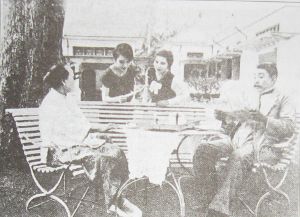
Lilly van Java, also known as Melatie van Java, is a 1928 film from the Dutch East Indies directed by Nelson Wong. Initially meant to be produced by South Sea Film and shot by an American director, the film – which follows a woman told to marry a man she does not love – was ultimately completed by Wong's Halimoen Film. Details on its cast and performance are contradictory, although the film is recognised as the first of a long series of ethnic Chinese-produced films in the country. It is likely a lost film.
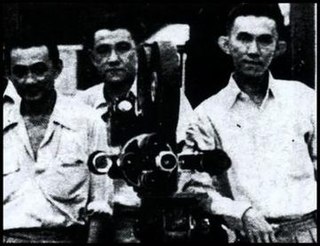
The Wong brothers were three ethnic Chinese film directors and cameramen active in the cinema of the Dutch East Indies. The sons of an Adventist preacher, the brothers – Nelson (1895–1945), Joshua (1906–1981), and Othniel (1908–1986) – received much of their education in the United States before going to Shanghai and establishing The Great Wall Productions.
![<i>Rentjong Atjeh</i> 1940 [[Dutch East Indies]] film](https://upload.wikimedia.org/wikipedia/commons/thumb/b/b4/Rentjong_Atjeh_ad%2C_Star_Magazine_2.20_%28August_1940%29%2C_p50.jpg/320px-Rentjong_Atjeh_ad%2C_Star_Magazine_2.20_%28August_1940%29%2C_p50.jpg)
Rentjong Atjeh is a 1940 action film from the Dutch East Indies directed by The Teng Chun. Telling of a group who take revenge against pirates in the Strait of Malacca, it starred Ferry Kock, Dewi Mada, Bissoe, Mohammad Mochtar, and Hadidjah. It was filmed near the shore in Batavia and reused footage from The's earlier work Alang-Alang (1939). Rentjong Atjeh, inspired in part by the Tarzan films, was a commercial success, although it may now be lost.
![<i>Roekihati</i> 1940 [[Dutch East Indies]] film](https://upload.wikimedia.org/wikipedia/commons/thumb/c/c1/Roekihati_%281940%3B_Malay%29.jpg/320px-Roekihati_%281940%3B_Malay%29.jpg)
Roekihati is a 1940 film from the Dutch East Indies. Directed by the brothers Joshua and Othniel Wong and produced by Tan's Film, it follows a young village woman who goes to the city and encounters various difficulties. Targeted at lower-class audiences, it was shot in black-and-white and starred Roekiah and Raden Djoemala.
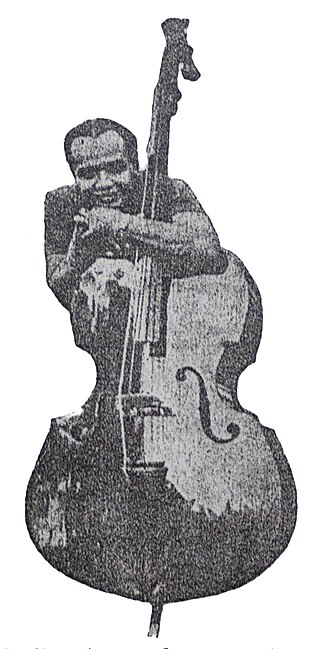
Raden Mas Kartolo was an Indonesian actor and songwriter. Born in Yogyakarta to a noble family, he entered the theatre and married the actress Roekiah around 1933. The two, living in Batavia acted in numerous movies together, starting with the 1938 hit Terang Boelan. However, Roekiah was always cast with other actors as her romantic interest. After Roekiah died in 1945, Kartolo brought the family to Yogyakarta and worked with Radio Republik Indonesia until his death. One of his sons, Rachmat Kartolo, went on to be an actor in the 1960s and 1970s.
![<i>Siti Akbari</i> 1940 [[Dutch East Indies]] film](https://upload.wikimedia.org/wikipedia/commons/4/49/Poster_siti_akbari.jpg)
Siti Akbari is a 1940 film from the Dutch East Indies directed by Joshua and Othniel Wong and produced by Tan Khoen Yauw. Starring Roekiah and Rd Mochtar, it follows a couple while the husband commits adultery.
![<i>Fatima</i> (1938 film) 1938 [[Dutch East Indies]] film](https://upload.wikimedia.org/wikipedia/commons/thumb/a/ab/Fatima_ad.png/320px-Fatima_ad.png)
Fatima is a 1938 film from the Dutch East Indies directed by Othniel and Joshua Wong. Written by Saeroen, it starred Roekiah, Rd Mochtar, and ET Effendi and followed two lovers who are disturbed by a rich youth. The film followed the same formula as the earlier hit Terang Boelan, and saw commercial success domestically. It is one of three films which Misbach Yusa Biran credits with reviving the domestic film industry, which had been faltering.

Kedok Ketawa is a 1940 action film from the Dutch East Indies. Union Films' first production, it was directed by Jo An Djan. Starring Basoeki Resobowo, Fatimah, and Oedjang, the film follows a young couple who fight off criminals with the help of a masked man.

Gagak Item is a 1939 bandit film from the Dutch East Indies directed by Joshua and Othniel Wong for Tan's Film. Starring Rd Mochtar, Roekiah, and Eddy T. Effendi, it follows a masked man known only as "Gagak Item". The black-and-white film, which featured the cast and crew from the 1937 hit Terang Boelan, was a commercial success and received positive reviews upon release. It is likely lost.

Bengawan Solo is a now-lost 1949 film from what is now Indonesia. Directed by Jo An Djan, it starred Sofia WD, Rd Mochtar, and Mohamad Mochtar.

Roesia si Pengkor, also known as Hadji Saleh, is a 1939 film from the Dutch East Indies which was directed and produced by The Teng Chun for his Java Industrial Films. Starring Da'ing, Bissu, and Hadidjah, this black-and-white film followed a young woman who is saved from deceptive suitors by her beloved and a man known as "Si Pengkor".
Gadis jang Terdjoeal is a c. 1937 film from the Dutch East Indies. It was directed by The Teng Chun, his first film to recognise native interests.
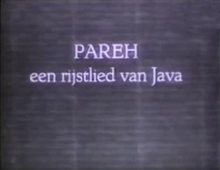
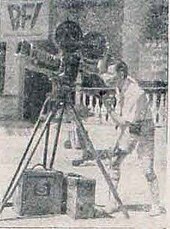
![<i>Zuster Theresia</i> 1932 [[Dutch East Indies]] film](https://upload.wikimedia.org/wikipedia/en/f/fe/Zuster_Theresia.jpg)







![<i>Rentjong Atjeh</i> 1940 [[Dutch East Indies]] film](https://upload.wikimedia.org/wikipedia/commons/thumb/b/b4/Rentjong_Atjeh_ad%2C_Star_Magazine_2.20_%28August_1940%29%2C_p50.jpg/320px-Rentjong_Atjeh_ad%2C_Star_Magazine_2.20_%28August_1940%29%2C_p50.jpg)
![<i>Roekihati</i> 1940 [[Dutch East Indies]] film](https://upload.wikimedia.org/wikipedia/commons/thumb/c/c1/Roekihati_%281940%3B_Malay%29.jpg/320px-Roekihati_%281940%3B_Malay%29.jpg)

![<i>Siti Akbari</i> 1940 [[Dutch East Indies]] film](https://upload.wikimedia.org/wikipedia/commons/4/49/Poster_siti_akbari.jpg)
![<i>Fatima</i> (1938 film) 1938 [[Dutch East Indies]] film](https://upload.wikimedia.org/wikipedia/commons/thumb/a/ab/Fatima_ad.png/320px-Fatima_ad.png)



